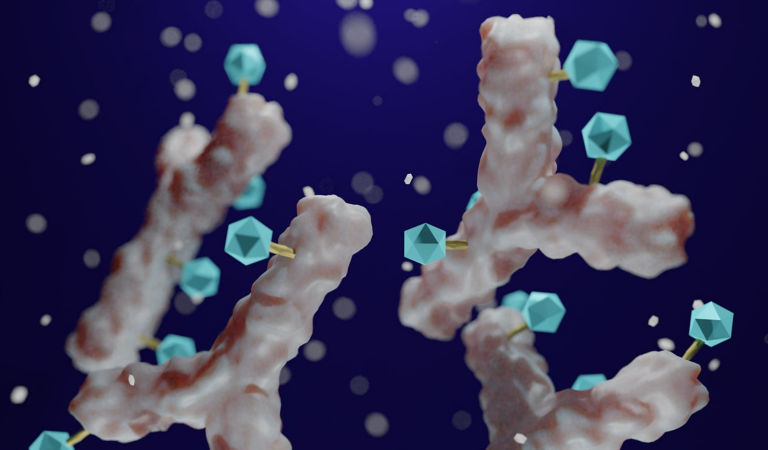Immunomodulatory therapies
Autoimmune and inflammatory diseases are key areas that we believe have plenty of unmet need and growth potential over the next decade. The unprecedented availability of private capital has enabled many private companies to be built around treatments for many patient indications in these areas. Targets that offer more specific immune modulation (and could therefore improve the risk/benefit profile) or more convenient routes of administration (through oral or extended activity formulations) are of particularly high interest to our team in the years ahead.
Precision oncology
Programs targeting specific tumor mutations have attracted a lot of capital over the past decade, but enthusiasm has been tempered by recent lukewarm launches, FDA scrutiny around the accelerated path to approval, and uncertainties around development after the Inflation Reduction Act.
However, we continue to be impressed by the progression of the underlying science and higher-than-average odds of clinical success for such programs. Notably, we have become increasingly focused on targets that suggest high efficacy and low competition, as well as oncology indications where there is a high and undisputable unmet medical need. In our view, innovations with these characteristics are better positioned to navigate the evolving challenges in the precision oncology space.
Antibody drug conjugates
Unlike conventional chemotherapy treatments that are toxic to healthy cells, antibody drug conjugates deliver chemotherapy agents directly to cancer cells. This is made possible by a “linker” that attaches a toxin to a monoclonal antibody that then binds to a specific target expressed on a cancer cell. By binding to the target, the ADC is able to release the cytotoxic drug directly into the cancer cell and avoid harming healthy cells.
The ADC modality has produced several important drugs of the past decade, and we are impressed with recent clinical updates in new cancer indications. The space continues to improve upon the safety and efficacy profile of ADC-based drugs (and the range of treatments that they may be able to offer) through progress in linker chemistry, conjugation technology, and payload (i.e., toxin) selection. We believe ADCs will solidify as a core treatment in the standard of care for many cancers, potentially across multiple lines of treatment given innovations in targeting and payload choices.
Radiopharmaceuticals
Radiopharmaceuticals, or radioligand therapies, are another targeted form of cancer treatment that deliver radiation to specifically targeted cancer cells, with minimal effect on surrounding healthy tissue. Momentum in the space has increased in recent years driven by encouraging clinical data and strong recent launches targeting neuroendocrine tumors and prostate cancer. In our view, this innovation, despite recent progress, is still in the early stages and the modality will continue to build on the precision oncology and ADC themes.
Further, radiopharmaceuticals have historically been hampered by the complexity of their commercial execution, but we believe recent advances and a growing market infrastructure should help overcome these challenges and increase pharma interest in the space.
T-cell-based therapies
CAR T-cell-based therapies have dramatically changed the standard of care and prospects of patients who suffer from a variety of blood cancers. The next wave of innovation in this space could improve upon the complicated logistical challenges of existing autologous approaches (which use cells from the patient). Novel manufacturing technologies could significantly shrink the process timeline or enable an off-the-shelf, allogeneic approach (which would broaden the source of cells beyond the patient).
Targeting solid tumors with these cellular therapies has proven to be challenging, and there is significant room for progress in this area. We are keeping an eye on novel CAR T-cell therapies that are armored with additional mechanisms that have the potential to survive the defenses of tumors in the tumor microenvironment. In our view, recent preliminary data from T-cell receptor (TCR)-targeting modalities — in both soluble (TCR engagers) and cell therapy (TCR-Ts) formats — combined with proof-of-concept clinical data from public companies working on this modality show encouraging progress. As we continue to explore the space, we are excited by second-generation products being built by multiple private companies focused on this innovation.
Targeted protein degradation
Protein degradation, through either proteolysis-targeting chimeric technologies (PROTACs) or molecular glues, is an area of high activity in the private markets. Unlike traditional small-molecule inhibitors that require an accessible catalytic site to block the activity of a protein, degraders can leverage any binding pocket or, in some cases, no binding pockets at all. As such, the modality can target previously undruggable proteins. In particular, the PROTAC field has advanced tremendously in recent years. We are now exploring the nascent space of molecular glues, which could see its historically challenging drug design issues helped by new breakthroughs in the field.






















